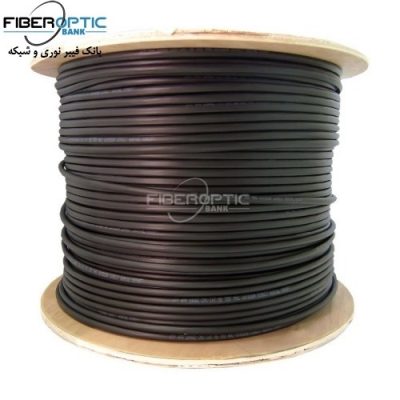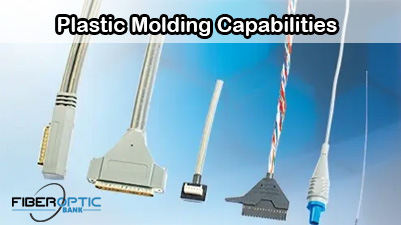How to Design Data Center Optical Cabling for 100G Network
As the demand for bandwidth grows exponentially in global enterprises, data centers need to be upgraded to enhance their computing, storage, and networking capacity. Migration from 10G/25G to 100G becomes an inevitable trend. As network upgrades, the optical cabling system of data centers needs to change accordingly. This article will guide you on how to design your data center optical cabling for 100G Ethernet.
The Need for 100G Ethernet
In recent years, the rapid popularization of emerging technologies and applications, such as 5G, cloud computing, big data, IoT, and 4K/8K video, creates massive data and increases the demand for bandwidth. Moreover, switching and routing, virtualization, convergence, and high-performance computing also require higher network speeds in data centers. Traditional 1G and 10G struggle to meet the demands of these high-bandwidth applications. Data centers are driven to migrate to 40G/100G networks to address current and future massive data processing.
With data centers’ network upgrades and expansion, a well-planned cabling infrastructure is critical. For data centers to thrive, the cabling infrastructure must provide reliability, manageability, and scalability. Reliable network connection and daily convenient management can ensure the daily proper operation of the data center. The scalability of cabling infrastructure enhances the data center’s ability to support the increased bandwidth demands of future applications.
Factors to Consider for 100G Data Center Optical Cabling Design
Designing and building an efficient and high-performance 100G data center cabling system requires consideration of various aspects of the cabling infrastructure, as follows.
Bandwidth
A data center is incomplete without the bandwidth needed to handle all the necessary network traffic. Bandwidth is a central component in data center infrastructure. Both external network connections and internal data center topology need to be designed around sufficient network capacity.
Upgrading to 100G, data centers are seeing significant growth in demand for more bandwidth and higher throughput. Accordingly, data center cabling infrastructure needs to have the capability to support high bandwidth.
Insertion Loss
Insertion loss is a critical performance parameter in current data center cabling deployments. It is caused by any connection points along a cable line (i.e., connectors and splices). The lower the insertion loss, the better the performance. Too high insertion loss can prevent the active device at the far end of the link from receiving and interpreting the signal correctly.
When preparing 100G data center fiber optic cables, the insertion loss specification of the connected components should be evaluated to achieve maximum flexibility.
Optical Skew
Optical skew is defined as the difference in light propagation time across fibers. It is becoming increasingly essential for parallel optics transmission. If there is excessive skew or delay on different channels, transmission errors can occur.
Connectivity solutions with strict skew performance need to be deployed to ensure the performance and compatibility of the fiber optic cabling across various applications.
IEEE and TIA Standards
Standards are very important in data center optical cabling systems. Standards for 100G are obviously different from other generations in all aspects, from the way of information transmission to the equipment needed.
IEEE standards are very important because they define performance parameters. IEEE 802.3ba Ethernet Standard provides detailed guidance for 100G transmission with multimode and single-mode fibers.
TIA defines the parameters for structured cabling systems for data centers. It includes guidelines for almost everything, including data center design, cabling system infrastructure, spaces and topologies, and cabling system.
Optical Cabling Design Solution in 100G Data Center
Optic fibers deployed in 100G data centers need to meet current and future application requirements and support reliable network connectivity and convenient management for data centers’ long-term operation and growth. Here is the recommended optical cabling design solution, including the optical cabling system and fiber selection.
Structured Cabling System
The optimal practice of 100G data center design is the structured cabling system that places larger EoR switches to connect to multiple servers via structured cabling interconnections or cross-connections, as shown below. The structured cabling system, described in TIA-942, supports low-latency communication between servers and provides the flexibility and scalability needed for quick and cost-effective expansion.
Recommend Optical Cabling Solution
Due to optimized performance, MPO-based connectivity using OM3 and OM4 fibers is the ideal solution for 100G data center design. It enables the migration of cabling from 25G to 100G simple and convenient. And OM3 and OM4 fibers are included in the IEEE 802.3ba Ethernet Standard, which can provide high performance and scalability typically required for 100G data center structured cabling system.
As shown in the figure below, 24-fiber MPO multimode patch cables can realize 100G connectivity between the EoR leaf switch and servers in data centers. The MPO jumpers connect to pre-terminated modules or panels, forming a simple plug-and-play cabling system.
Besides supporting network upgrades to 100G, MPO solutions with OM3 and OM4 fibers meet 100G data center requirements in terms of bandwidth, insertion loss, and optical skew.
Bandwidth
OM3 and OM4 fibers are optimized for 850 nm transmission and have a minimum 2000 MHz∙km and 4700 MHz∙km effective modal bandwidth (EMB), respectively. Using an MPO connectivity solution with OM3 and OM4 fibers, the optical infrastructure deployed in the data center will meet the bandwidth performance standards specified by IEEE, Fibre Channel, and InfiniBand.
Insertion Loss
MPO connectors feature high quality and low insertion loss. The MPO-connector-based optical cabling systems can meet the required loss budgets for data center 100G transmission.
Optical Skew
The IEEE 802.3ba standard defines an optical media skew of 79 ns. Skew testing on MPO connectivity solutions using OM3 or OM4 has demonstrated compliance to a strict 0.75 ns skew requirement.
Preparing for the Future
Existing and emerging networking technologies and applications are driving the need for higher data transmission rates and better cabling systems in data centers. Optical connectivity solutions are necessary to address these trends. MPO-based connectivity with OM3 and OM4 fibers is the ideal solution, providing an easy and reliable migration path for data centers to 100G Ethernet.
Source: community.fs
Related products...
fiber-optic-cable
fiber-optic-cable
fiber-optic-cable















[ratings]